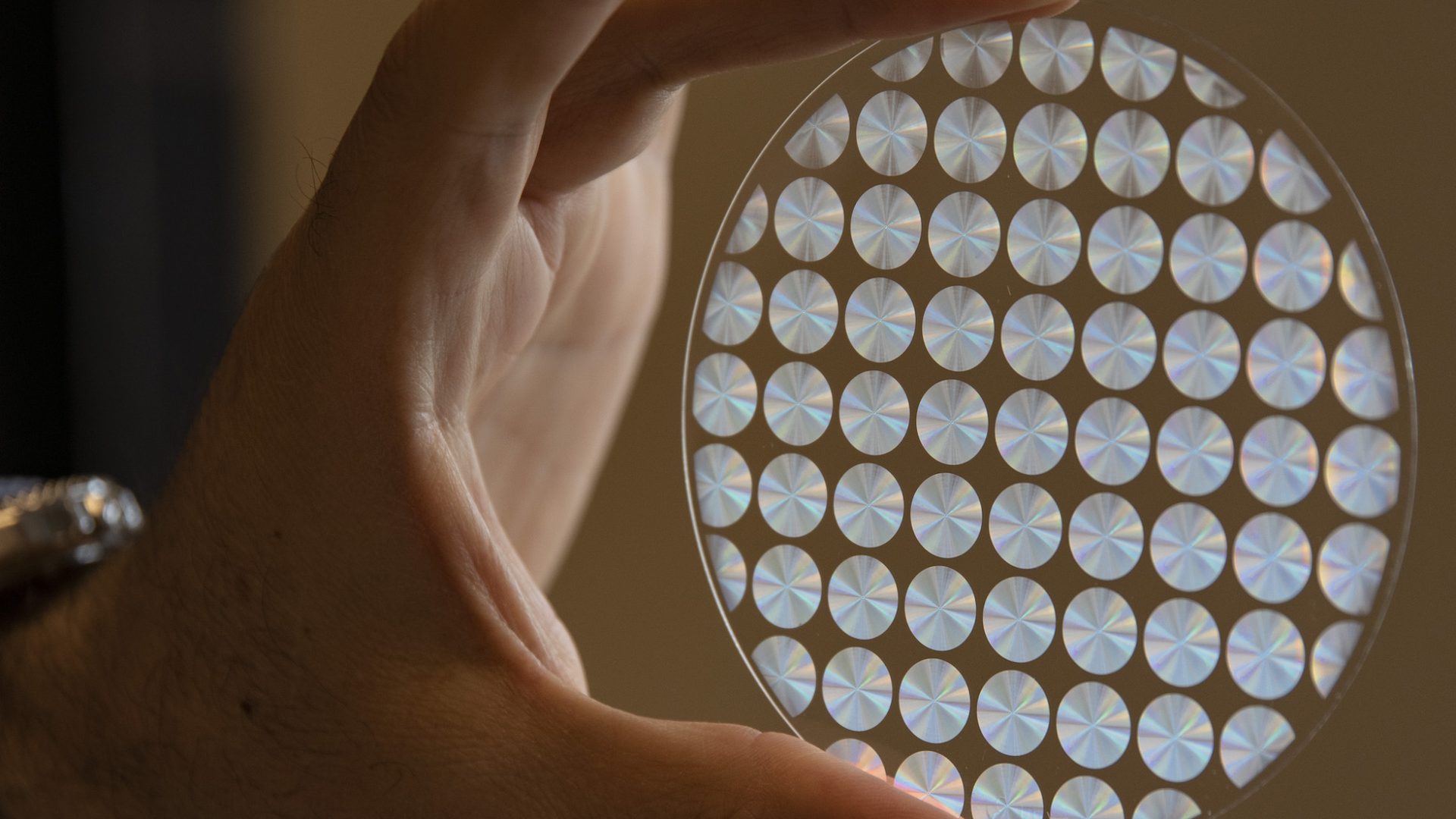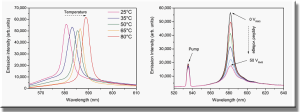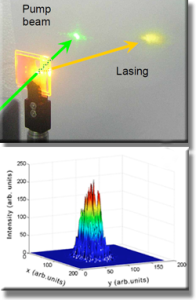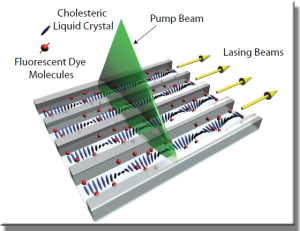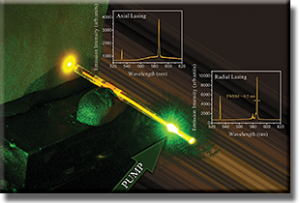Structured organics having a spatial periodicity equal to optical wavelengths have attracted considerable attention from both fundamental and applicative viewpoints because novel physical concepts such as the photonic band-gap have been predicted. In particular, the study of stimulated emission in the photonic band-gap is one of the most attractive subjects, since, in the band-gap, spontaneous emission is inhibited and low-threshold lasers based on structured organics is expected.
Thus far, intensive studies on one- and two-dimensional band-gap materials have been performed. In a one-dimensional (1D) periodic structure, laser action has been demonstrated at the edge of the photonic band-gap, where the photon group velocity approaches zero. Lasing has been explained through the phenomena of distributed feedback. These distributed feedback laser are highly compact because they do not require the use of a mirror cavity to operate.
The most interesting aspect, of these lasing systems, is related to the possibility to modify the spatial periodicity characterizing the confining optical cavity by varying external parameters (temperature, electric field, mechanical stress, optical field, etc.).
Because lasing is found to occur at the edge of the band-gap, which is directly related to the spatial periodicity, the wavelength of the laser emission can be tuned (from the UV to the NIR including the telecommunication band) by varying these external parameters.
Laser action has been interestingly demonstrated even in completely disordered media giving rise to a diffusive random laser. Light diffusion and laser physics meet in the random laser: a multiply scattering medium that amplifies light. Upon optical pumping, the light from the material propagates diffusively inside, and is emitted into all solid angles. Instead of leaving the system immediately along a straight path, the light spends a long time inside the medium because of the diffusive transport, thus getting the chance of being amplified strongly if there is sufficient gain. These systems open a completely new challenging research field with thrilling perspectives for scientific and technological purposes.
In the last years our team has been mainly involved in creating and studying novel photonic band-gap microstructures which give rise to color tunable, DFB micro-cavity lasers with a high ratio between the quality factor Q of the cavity and its volume V, usually referred to as the Purcell-number.
The optical micro-cavities were obtained by embedding dye-doped helixed liquid crystals in holographically patterned polymeric micro-channels. The orientation of the LC helix axis along the micro-channels offers several physical advantages: increase of the cavity length and thus the number of periods, small modal volume, directional control, improvement of the liquid crystal orientational order parameter and wavelength tunability. The presented geometry allows obtaining a number of periods that is about two orders of magnitude larger than conventional systems because it exploits the entire length of the micro-channel in a waveguide regime instead of the sample thickness.
In this way, each micro-channel becomes an optical mirror-less microcavity with a very small volume V of only a few cubic micrometers.
This results in a remarkable Purcell-number (highly desirable), since it relates the spontaneous emission enhancement and the severe reduction of the laser emission threshold. Electro-hydrodynamic instabilities and turbulence in liquid crystals are also representing an unparalleled scientific arena to investigate the interesting physics behind the chaotic lasing.

